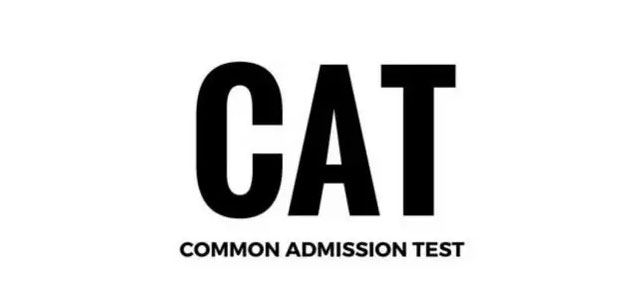


i. The candidate must possess a bachelor's degree with a minimum 50 per cent aggregate or equivalent CGPA (45 per cent aggregate for SC, ST and PWD/DA category) from a recognised board or university
ii. Candidates appearing for the final year of bachelor's degree/equivalent qualification or awaiting result are also eligible to apply for the CAT exam
i. Quantitative Aptitude (QA),
ii. Verbal Ability & Reading Comprehension(VARC)
iii. Data Interpretation & Logical Reasoning (DI & LR).
| Section | Number
of Questions | Marks
(Out of 300) | Marking
Scheme (only for MCQs) | Time
Allocated | Expected
Level of Difficulty |
| Verbal
Ability | 34 | 102 | +3/-1 | 60 Min. | Moderate
to difficult |
| Data
Interpretation and Logical Reasoning | 32 | 96 | +3/-1 | 60 Min. | Moderate
to difficult |
| Quantitative
Ability | 34 | 102 | +3/-1 | 60 Min. | Moderate
to easy |
| Total | 100 | 300 | - | 180
Min. |
Note: Due to the covid-19 crisis, CAT 2020 had added a new element to the table by reducing the exam duration from 60 minutes to 40 minutes per section and the number of questions reduced to 76 from 100.
| Sections
of Exam (in that order) | No
of questions | Multiple
Choice Questions | TITA
(Type in the answer questions) | Important
features |
| VARC | 26 | 18 | 8 | Four RC Passages with 18 multiple-choice
questions. Basic topics were para jumbles, para summary and odd one out. |
| DILR | 24 | 18 | 6 | Data
Interpretation – 14 questions Logical
Reasoning- 10 questions. (Sets of 4 and 6 questions) |
| QA | 26 | 18 | 8 | Focused on number systems and arithmetics. Other
contenders were logarithms geometry, roots and algebra |
| Total | 76 | 54 | 22 |
| Subjects | Important Topics |
| Quantitative Aptitude | • Number Systems • HCF & LCM • Profit, Loss and Discount • Simple and Compound Interest • Percentages • Speed, Time & Distance • Time & Work • Ratio & Proportion • Averages • Quadratic Equations • Complex Numbers • Logarithm • Binomial Theorem • Sequence and Series • Surds & Indices • Probability and Permutation Combination • Set Theory • Functions • Geometry and Mensuration • Mixtures and Allegations • Trigonometry |
| VARC | • Paragraph-jumbles • Para Summary • Cloze Passage • Picking the odd sentence out • Verbal reasoning – Grammar based or logic based • Sentence and contextual usage • Analogies and reverse analogies • Sentence Correction • Idioms and Phrases • Vocabulary based questions- Antonyms, homonyms, metaphors etc. • Facts and inferences |
| DILR | • Tables • Pie Charts • Seating Arrangement • Logical Deduction • Cause and Effect • Calendars • Clocks • Blood Relations • Venn Diagrams |
